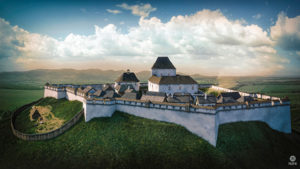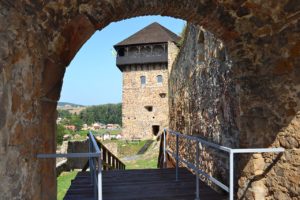The Long War, Part Six / November-December 1593

The re-taking of the castles of Nógrád and Gömör County
The fighting ended in the Trans-Danubian region of the Kingdom of Hungary, but military action continued in the Upper Country of Northern Hungary. To learn more about these battles, please see the previous article:
Pasha Kirli Haszán of Temesvár (Timisoara) launched an attack on the castles of Kálló and Szatmár (Satu Mare). However, he had to turn back because Prince Báthori Zsigmond of Transylvania (the Sultan’s vassal) refused to join him. Note that this refusal is a sign of the growing independence of the Transylvanian Principality.

Pasha Hasszán had to hurry because the Hungarian hussars of the Trans-Tisza region were following in his footsteps, led by Báthori István of Ecsed. Báthori István was from a different branch of the Báthori family, serving the Habsburg king, but he was also related to the Transylvanian prince. Soon he was joined by the troops of the captain of Kassa (Kosice, Kaschau) Christoph Teuffenbach and the rest of the troops from the Upper Country, which grew to 12-16,000 men. The combined army took the small palisade fort of Szabatka (near Rimaszombat / Rimavska Sobota) on 18 November after several days of bombardment. They slaughtered all the defenders after taking the castle. You can read about it here:
They then moved against the strong castle of Fülek (Filakovo), which was the center of an Ottoman administrative unit called a sanjak. (The size of a sanjak usually covered the area of the former Hungarian county). 1,000 defenders in Fülek fought bravely between 19 and 27 November. The Pasha of Temesvár and the Pasha of Buda sent reinforcements, but they failed to surprise the besiegers. On the contrary, the Hungarians managed to surprise them at dawn on 27 November when they ambushed the reinforcing Turkish army. They were led by Báthory and the army consisted of troops from the Borderland Hussars. The Turks were defeated halfway between Fülek (Filakovo) and Romhány (in the Cserhát mountains).

Meanwhile, Teuffenbach continued the siege of Fülek. Soon the troops of Pálffy Miklós (5-8,000 men) returned from the Trans-Danubian region and the castle surrendered on 27 November. The Turks were not harmed and they were escorted (700 Turkish guards and their families) to Szécsény Castle. When they heard about the fall of Fülek, the smaller fortresses were surrendered to the Christians, and the Turks left them. The castle of Szécsény also surrendered and the soldiers of Teuffenbach arrived there on 3 December. The captain-in-chief of Kassa then returned to his headquarters and Báthori to the Trans-Tisza region.

On his way home, Pálffy took the (empty) castle of Drégely on 7 December. In fact, the Ottomans had destroyed the old castle so badly during the famous siege of 1552 that it was never used again. Instead, they built a palisade fort around the village church. It guarded the road to the valley of the Ipoly River and the road leading north to the Mining Town district. The new fort was called Palánk. (The place is now called Drégelypalánk.) Pálffy appointed Nagy Ferenc to command the Drégely and Palánk castles. Later, the small Palánk was fortified, but Drégely castle was not. The palisade had to repel several Ottoman attacks. Here is more about the history of Drégelypalánk:
https://www.hungarianottomanwars.com/kingdom-of-hungary/dregely/

During the three-week campaign, they captured a total of 12 castles: Szabatka, Fülek, Drégely, Divény, Ajnácskő, Kékkő, Szécsény, Hollókő, Somoskő, Palánk, Buják and Hídvég. You can find almost all of them on my page with pictures and their history. You can read more about Pálffy Tamás, the older brother of Pálffy Miklós, here:
https://www.hungarianottomanwars.com/essays/palffy-tamas-1534-1581-a-hungarian-hero/

All in all, by the end of 1593 the Turks had captured some important castles in the southern Trans-Danubian region (Veszprém, Palota), while the Christians managed to recapture some strategically less important fortresses in the north. At the same time, the more disciplined but smaller Christian armies were able to defeat the Turks in three open-field battles: at Sziszek, Fehérvár, and Romhány. The defeat of the hitherto ‘invincible’ Ottomans in open battle helped to improve the morale of the Christian army.
The following year would be harder as the stakes were higher.
(Source: Szibler Gábor)
Dear Readers, I can only make this content available through small donations or by selling my books or T-shirts.
If you like my writings, please feel free to support me with a coffee here:
You can check out my books on Amazon or Draft2Digital, they are available in hardcover, paperback, or ebook:
https://www.amazon.com/dp/198020490X
or at https://books2read.com/b/boYd81


My work can also be followed and supported on Patreon: Become a Patron!http://Become a Patron!



